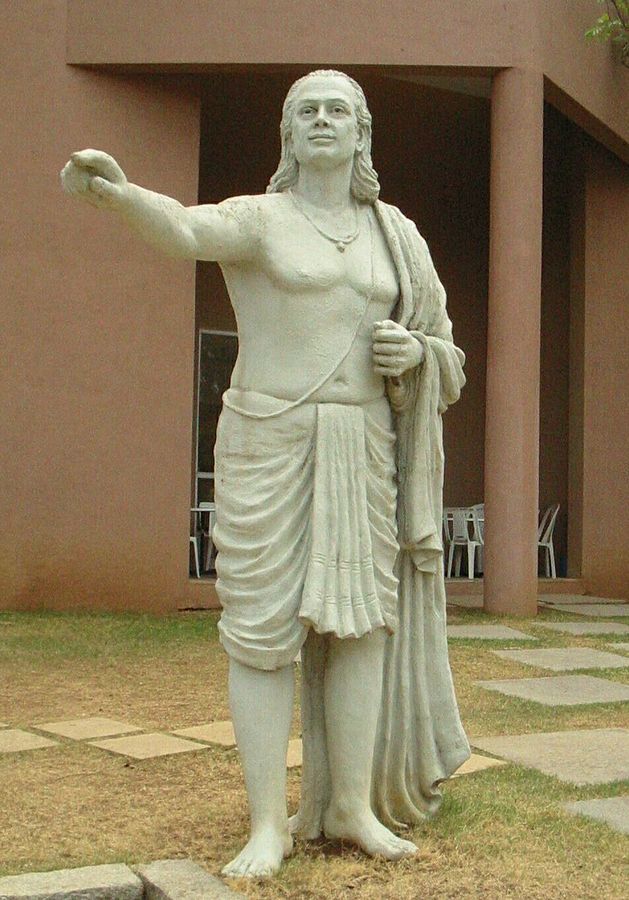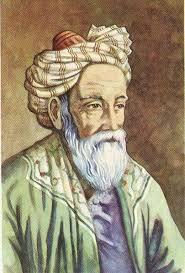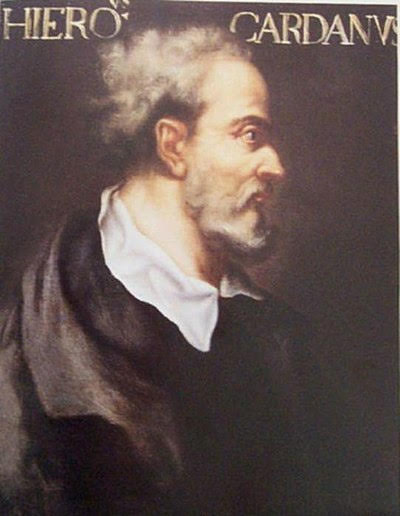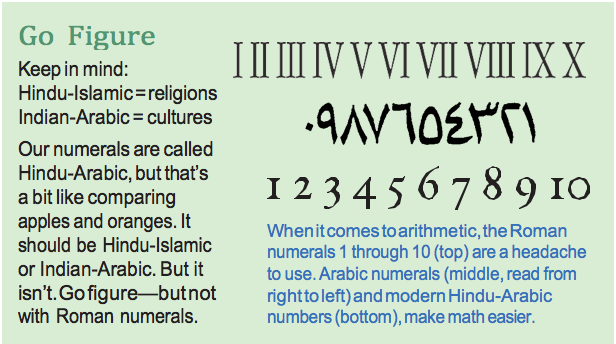LESSON 8
A Number Called Zero? Going back through time to see how we learned to count.
A Number Called Zero? Going back through time to see how we learned to count.
|
Do you want to be a mathematical genius? Just time warp yourself back to the Middle Ages (say 500 years ago), or almost any time before the seventeenth century, and you will be able to do mathematics that only geniuses—or at least very, very bright people—can do. I guarantee it. If you've made it to third grade or beyond, you can do the kind of arithmetic that would have made your ancestors gasp with wonder at your brain. Imagine yourself in a schoolroom in medieval Europe, and you'll see your classmates struggling to do arithmetic with those cumbersome Roman numerals. Besides that, your classmates have never heard of zero. Without zero as a helper, math is really tough. But zero isn't the only mathematical tool they are missing. They haven't learned the concept of numerical place.
Numerical place? It's the idea of a ones column and a tens column and a hundreds column, and so on. The fancy term for it is positional notation. Try multiplying 139 by 62. Or 49 by 8. Without number columns, you will have to add 139 sixty-two times. Or 49 eight times. Now try multiplying the numerals XVI x CXI, and don’t convert them to our familiar numbers. That's the kind of calculating many Europeans were still doing just five centuries ago. Finally, with Hindu-Arabic numerals (that’s what we use today), zero, and positional notation, ordinary people could do arithmetic. Multiplication and division became easy! With zero as a number, mathematicians had a new tool in their toolbox. They could do complex calculations that had been impossible before. "In the history of culture, the discovery of zero will always stand out as one of the greatest single achievements of the human race," says math historian Tobias Dantzig. So how did we get from Roman numerals, no zero, and no positional notation to our present system? The idea germinated in India and came to flower in the Arab world. We don't know exactly when Indian thinkers developed a whole new number concept—it took several centuries; what's important is that they did it. In the year 499 a Hindu mathematician named Aryabhata (ar-yuh-BUHT-uh) published a famous book on math and astronomy in verse! That helped. India was in its "classic period," when art, sculpture, and poetry reached a pinnacle (at the same time, in Rome, the empire was falling apart). Aryabhata used nine digits and zero in a base-10 system. Then, (in 628) an Indian scholar by the name of Brahmagupta borrowed some equations used in ancient Greece. But Brahmagupta did something the Greeks had never done: he solved equations using zero. He understood that zero can be more than just a placeholder; it can be a number itself. Indian thinkers then took three ideas that had been used elsewhere and made a powerful connection between them. The ideas were positional notation, zero, and the base-10 (or decimal) system. Indian scholars had created a number system that almost everyone could master. Someone had to tell the rest of the world about that accomplishment. Arab mathematicians did so. In the eighth century, the Islamic world was having its own classic period. Harun al-Rashid (hah-ROON ahl-rah-SHEED) was caliph (Islamic ruler) of an empire that stretched from the Mediterranean to India, with Baghdad as its capital. Harun, who was an absolute monarch, could do what he wanted, and he wanted to bring arts and sciences to his realm. He was just getting into high gear when he died, in 809, and his two sons fought to succeed him. One of his sons, al-Mamun (ahl-mah-MOON), won the fight and went even further than his father. In 830 he founded an academy in Baghdad called the House of Wisdom, an intellectual center that included an observatory and a major library. Baghdad became a new Alexandria and the world’s richest city. It was home to Arabs, Indians, Greeks, Jews, Christians, Muslims, and pagans. Sailing ships from distant places, like Zanzibar and China, lined up at palm-shaded docks along the river Euphrates. In the middle of the city, three rings of walls surrounded the sumptuous Golden Palace and the Great Mosque. Outside the walls were fabulous gardens, plazas, and bazaars where you could buy cinnamon from Sumatra, cloves from Africa, silk from India, and local spinach (unknown in Europe). You could also buy slaves. Al-Mamum was said to have had a dream in which he spoke to Aristotle. After that, he was determined to have Arabic translations made of all the Greek works he could find. (We can thank him for saving many treasured writings we now enjoy.) Meanwhile, Arabs opened a House of Wisdom in Fez (Morocco) in 859, and another in Cairo (Egypt) in 972. In Cordoba (Spain), Muslim and Jewish scholars worked together at a fine library keeping the ideas of the ancients alive. One of the ninth-century superstar scholars at the House of Wisdom in Baghdad was a mathematician named Muhammad ibn-Musa al-Khwarizmi (ahl-KWAHR-iz-mee). He wrote more than a dozen books and is thought to be among the greatest mathematicians of all time. Al-Khwarizmi used Hindu digits, put numbers in columns, wrote of zero, and calculated with algebraic equations. Two centuries later, Omar Khayyam (ky-AM), a renowned Persian mathematician, poet, and astronomer, wrote of the "majority of people who . . . confuse the true with the false, and . . . do not use what they know of the sciences except for base and material purposes." By the eleventh century, the Islamic golden age was in decline. Assassinations and turmoil had led to a loss of freedom. And scientific progress rarely happens in an unfree atmosphere. The story now shifts to Italy, where Leonardo Pisano becomes an important player. Pisano got his last name because he came from Pisa, Italy. But one nickname didn't seem to be enough. Today, Leonardo is known by a writing nickname, Fibonacci (feebuh-NAH-chee), from the Latin filius Bonacci, which means "son of Bonacci." Here are some words he wrote in 1202: My father was a public scribe of Bejaia [Algeria], where he worked for his country in Customs, defending the interests of Pisan merchants who made their fortune there. He made me learn how to use the abacus when I was still a child because he saw how I would benefit from this in later life. In this way I learned the art of counting using the nine Indian figures . . . as follows: 9, 8, 7, 6, 5, 4, 3, 2, 1 . . .. With these nine numerals, and with this sign 0, called zephirum in Arabic, one writes all the numbers one wishes. Fibonacci's father had ties to Italian merchants and North African Muslims. He understood the value of the new numbers. So it made sense to him to have his son tutored by mathematicians in Algeria. Fibonacci discovered a scholarly book on number notation; it was written by the Muslim mathematician al-Khwarizmi. It opened a new world to him. When Fibonacci returned to Italy, he wrote his own book, Liber Abaci. It made a strong case for the use of Hindu-Arabic numerals and for zero. The zero idea, that nothing can really be something, was mind-stretching for the few who got it. His book made a big impact, but only on a small number of scholars. It would still be centuries before the average person used the new numbers. (This was before printing presses; books had to be copied by hand.) Change was also slow because European nations were embarked on military and religious expeditions, or Crusades, to the Holy Lands in the eleventh, twelfth, and thirteenth centuries. The goal was to capture Jerusalem and other biblical lands from Muslims and put them under Christian control. So it wasn't a great time to introduce Hindu-Arabic numbers to the West. Hindu-Arabic numbers were called seditious and un-Christian and were actually outlawed in some places in Europe. Which meant the spread of this great idea was snail-paced. There was an exception to this. Merchants from Genoa, Pisa, Venice, Milan, and Florence didn’t care about politics; they were carrying on a profitable trade with the Arab world. The Italians were experimenting with merchant capitalism, and anything that could make it work appealed to them. Hindu-Arabic numbers were spectacularly efficient and easy to use, so the practical-minded and informed noticed and used them. Those numbers became a secret code for people in the know, especially for savvy merchants. Others had to wait. Finally, by the eighteenth century, word had spread about the ease of the new numbers. After that, hardly anyone in Europe used abaci or finger-and-toe arithmetic. They were calculating as you do today. |
These lessons are intended for your use at home. They are copyrighted by Joy Hakim and are not for commercial use or redistribution. * Mathematicians aren’t often considered heroes. They should be. It’s tough work that takes hard thinking. Most mathematicians can’t help themselves. Numbers are there in their heads waiting to be explored. Girolamo Cardano is one of history’s most interesting mathematicians. His father was a friend of Leonardo da Vinci, which puts him in the Renaissance. (Cardano’s years are 1501-1576.) He was an astrologer and a doctor, he wrote 131 books. He was also a gambler and he wanted to see if chance events (like the role of a dice) could be studied mathematically. What he found has influenced statistics, marketing, the insurance industry and weather forcasting. See what you can find out about him and about other great mathematicians like: Leonard Euler, Carl Frederich Gauss, George Cantor and Terry Tao (an Australian of Chinese heritage who today lives in the U.S.). Research then write an essay, a poem, a song. Celebrate numbers. Draw a picture. * "The point about zero is that we do not need to use it in the operations of daily life. No one goes out to buy zero fish."
- Alfred North Whitehead (1861-1947), English mathematician and philosopher. ONE, TWO, BUTTON MY SHOE
Did you sing about numbers when you were small? Why not now? See if you can put some multiplication tables to music. Or if you are way past those tables, some other number stories. Actually almost anything you want to remember, put to music, will stay in your head. Try and think of numbers as if they were people. Could ONE be a happy chirping friend and TWO a grouch? Try and draw numbers and give them personalities. Add them together: do they fight when combined, or sing in harmony? Write a story about numbers who come to life. I find writing for beginning readers--those 5 and 6 year olds you may know--frees my imagination. So write (and illustrate) a number story for a kindergartener, or for the youngster inside you and all of us. Something to think about now: calculus. It's the math you may study in high school and college. It is said to be difficult so some people don't even try. Calculus is very important if you are to understand space travel and other opportunities in today's world; think ahead and plan for the mathematics of movement and more. |




